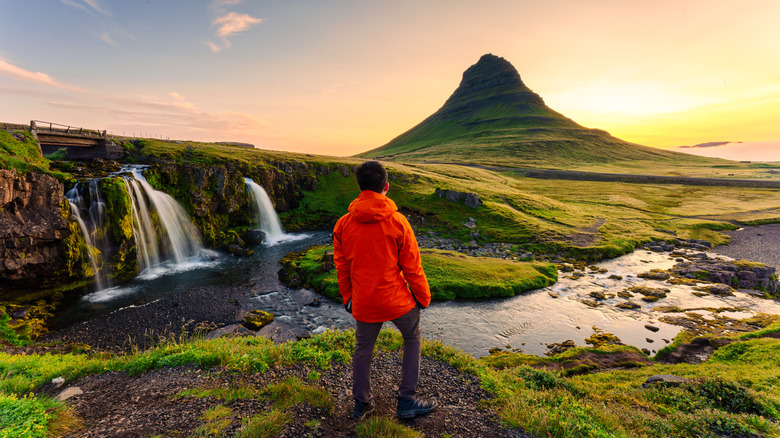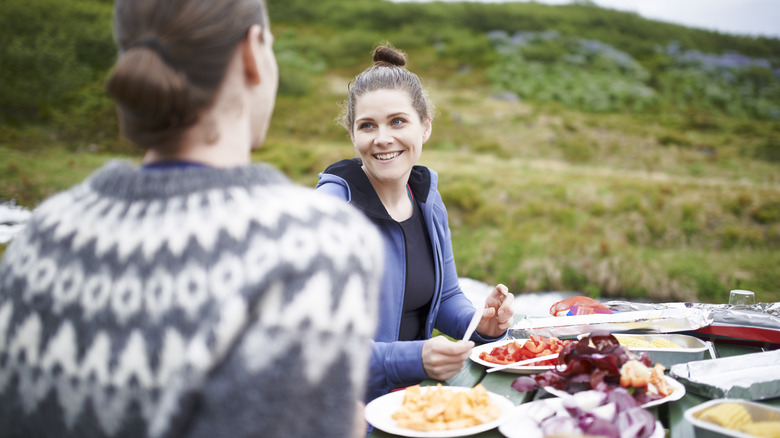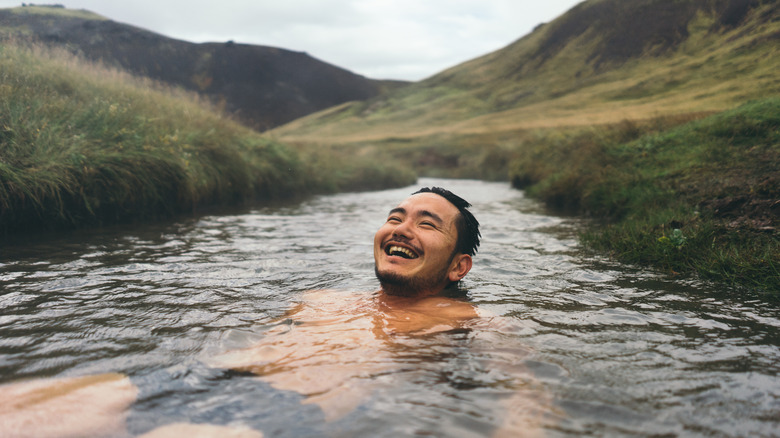Here's How To Visit Iceland On A Shoestring Budget, According To Rick Steves
Iceland has gained a reputation for being hard on a traveler's wallet. And we're sorry to say that the reputation is deserved. Iceland is expensive. Accommodations, rental cars, food, and excursions all add up to make visiting the island one of the most expensive vacations you can take. So, do you have to skip Iceland if you're on a shoestring budget? No, because Rick Steves, Iceland-lover and lifelong budget traveler, has a trick up his sleeve.
To save money on your Iceland vacation, Rick Steves recommends skipping the expensive restaurants and "stocking up on groceries at a supermarket where locals shop." On his Facebook page, Steves posted a photograph of his supermarket haul showing "more than enough for three meals." The spread cost 5,000 króna, which is about $35. One meal out will generally cost you between $25 and $40 per person, and even fast food will set you back that much. Making your own food can mean major savings.
So, where do the locals shop in Iceland? The most affordable grocery stores are Bónus and Kronan (10-11 and Krambudin are more expensive). One thing you won't be able to pick up in a supermarket? Alcohol. You can visit a Vínbúðin liquor store or hit one of Reykjavík's trendy bars, though you'll pay around $11 for a pint.
More ways to save on food and drink
One big tip from Rick Steves' team is to enjoy a picnic. Follow Steves' advice to buy groceries in the city, then make a packed lunch or dinner and enjoy it outdoors (you're most likely in Iceland for the scenery rather than the food anyway). Food choices can be limited and way overpriced while you're on the road, so you're probably not missing out.
If you want to go out to eat (you are on vacation, after all), head out for lunch rather than dinner. Many restaurants offer reduced-price specials over lunchtime. One positive thing about Iceland compared to the U.S. is that taxes are included in the bill, and there is no need to tip. What you see is what you'll pay. However, if you do splurge on a fine dining meal, it's appropriate to tip around 10–15% for exceptional service.
Finally, let's talk about drinking. When in Iceland, you should avoid bottled water and drink tap water instead. It's of excellent quality, so ask for tap water in restaurants and fill up your reusable bottle before going out for the day. And if you're looking for something a little harder than water, seek out happy hours in Iceland's bars. You can generally get a pint of beer for under $8 during these promotions, which often run for several hours.
Saving on accommodation and attractions
We said at the beginning of this article that basically everything comes with a hefty price tag in Iceland, though there are ways to save on many costs. Accommodations will take up a large portion of your budget; guesthouses (which may be charmingly rustic) and hostels are often the cheapest indoor options. But if you really want to stretch your króna, grab a tent. Campsites cost between $12 and $20 per person per night — a bargain in any country, never mind in Iceland. Private rentals on sites like Airbnb often cost less than hotels, but we'd like to gently steer you away from that option. As in many places, locals in Iceland are being priced out of the housing market because of the sheer number of tourist rentals. Don't contribute to the problem!
Finally, attractions can take a significant chunk of your vacation budget. Luckily, there are lots of budget-friendly things to do in Iceland, from cycling around the capital to visiting the Húsdýragarðurinn Zoo, which costs less than $15. And what of Iceland's main tourist attraction, the Blue Lagoon? Many people, including Rick Steves' team, claim that the Blue Lagoon isn't worth the cost, especially as there are a ton of far cheaper and less crowded alternatives dotted around this geothermally active island. There are even many free hot springs you can soak in. So pack a picnic and a tent and get out into the countryside.


